Abstract
The trypanosomatid metabolite N1,N8-bis-(glutathionyl)spermidine (trypanothione) has been demonstrated to form a stable adduct with the aromatic arsenical drug melarsen oxide [p-(4,6-diamino-s-triazinyl-2-yl)aminophenyl arsenoxide]. The stability constant of the melarsen-trypanothione adduct (Mel T) has been determined to be 1.05 x 10(7) M-1. When bloodstream Trypanosoma brucei are incubated with either melarsen oxide or the 2,3-dimercaptopropanol adduct of melarsen oxide (melarsoprol), Mel T is the only arsenical derivative detectable in acid-soluble extracts of the cells. Trypanothione may therefore be regarded as a primary target for aromatic arsenical derivatives against African trypanosomes. The selective toxic action of these compounds might arise through sequestration of intracellular trypanothione in the form of Mel T, or Mel T itself may be toxic within the cell. The latter possibility is illustrated by the finding that Mel T is an inhibitor of trypanothione reductase from T. brucei (Ki = 9.0 microM)--an enzyme that is central to the regulation of the thiol/disulfide redox balance in the parasite and absent from the host.
Full text
PDF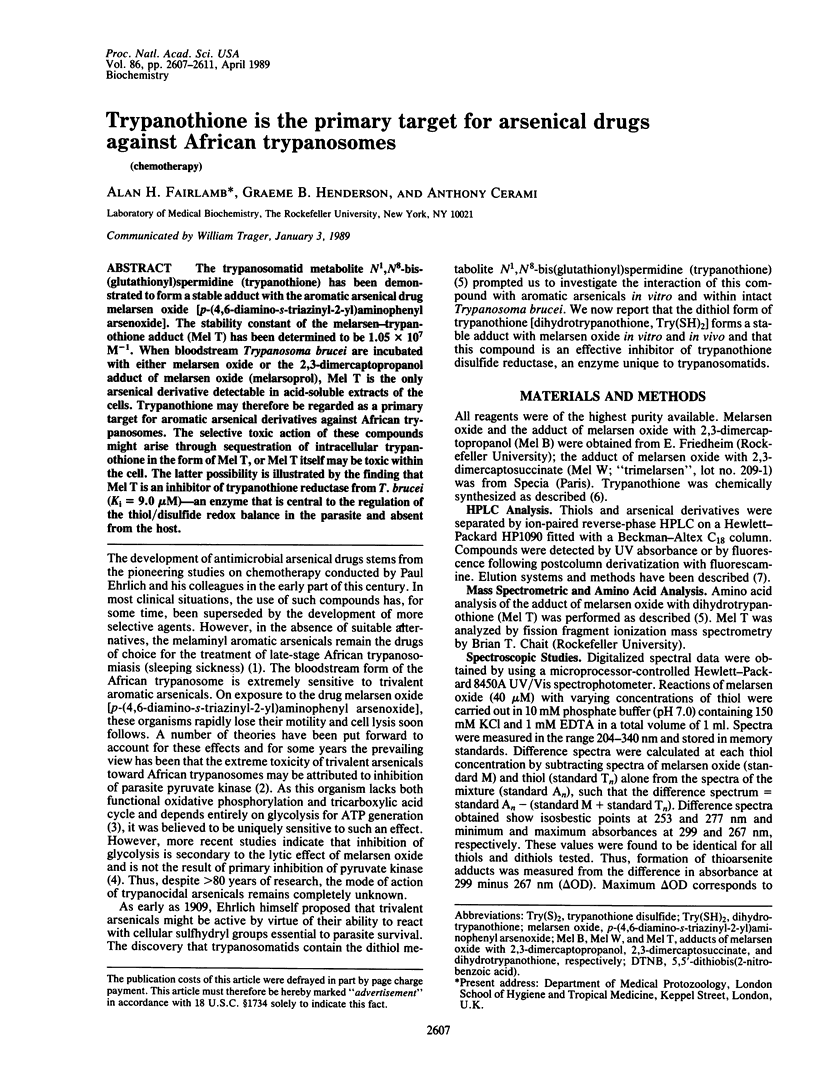
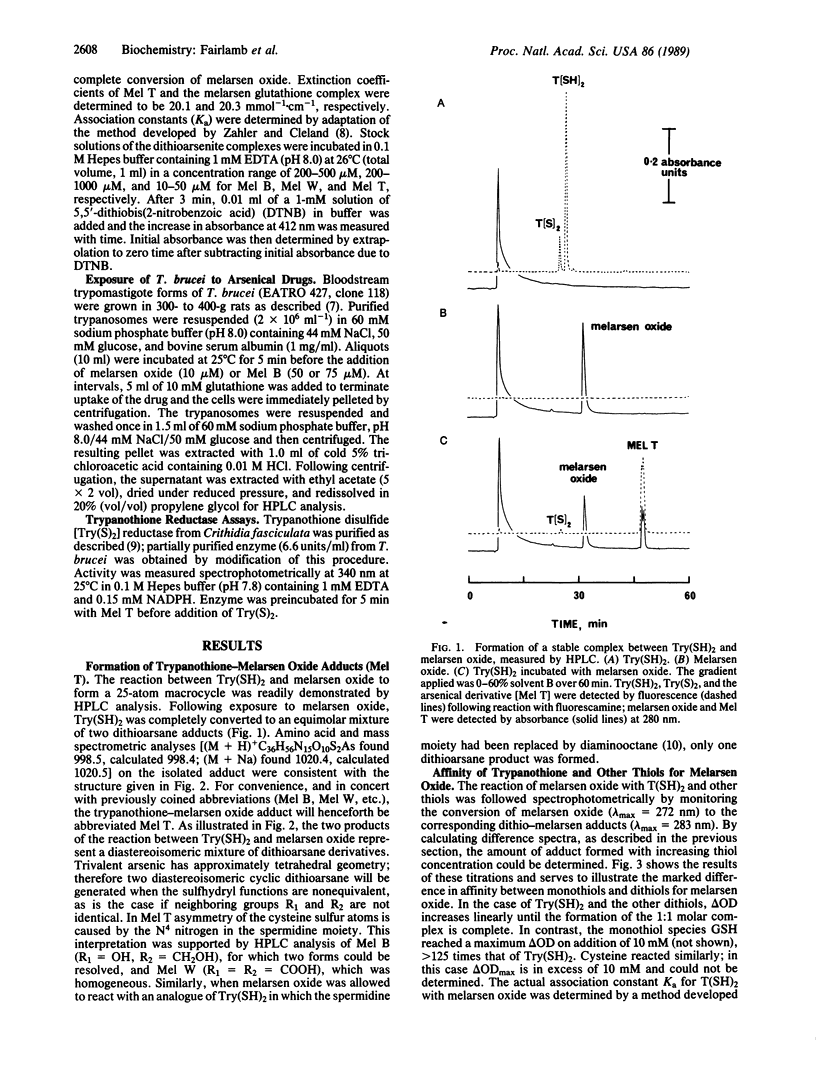
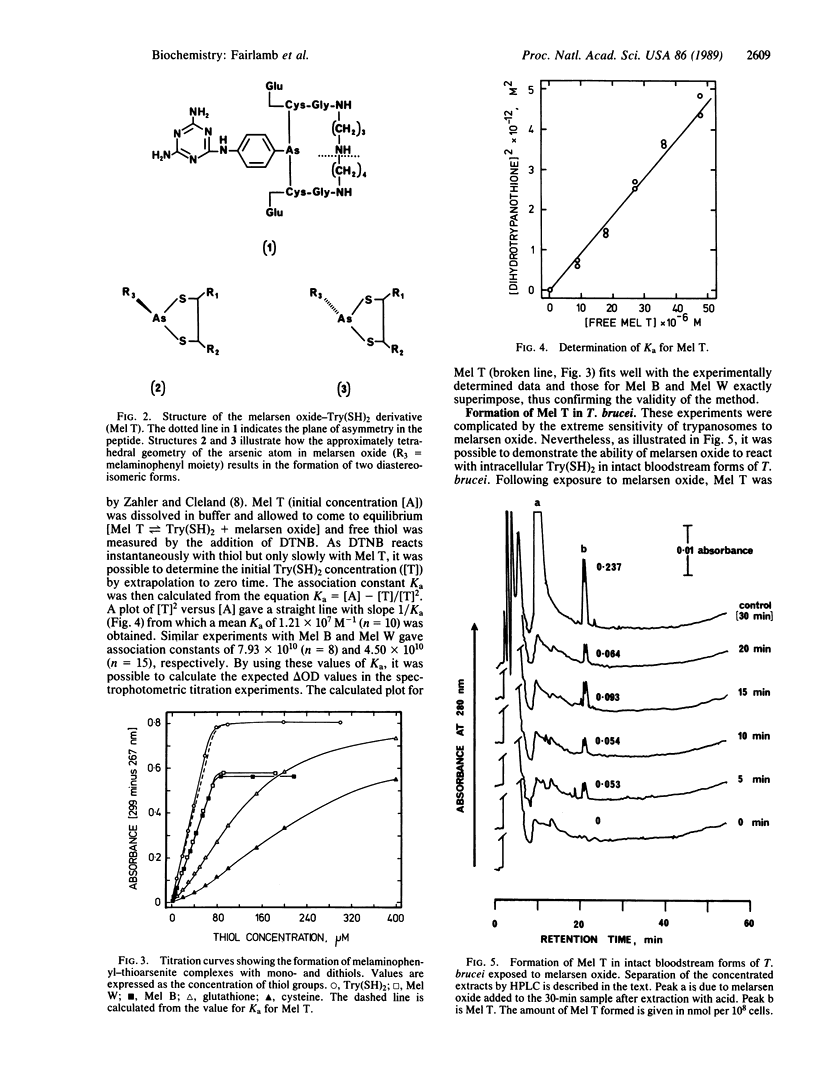
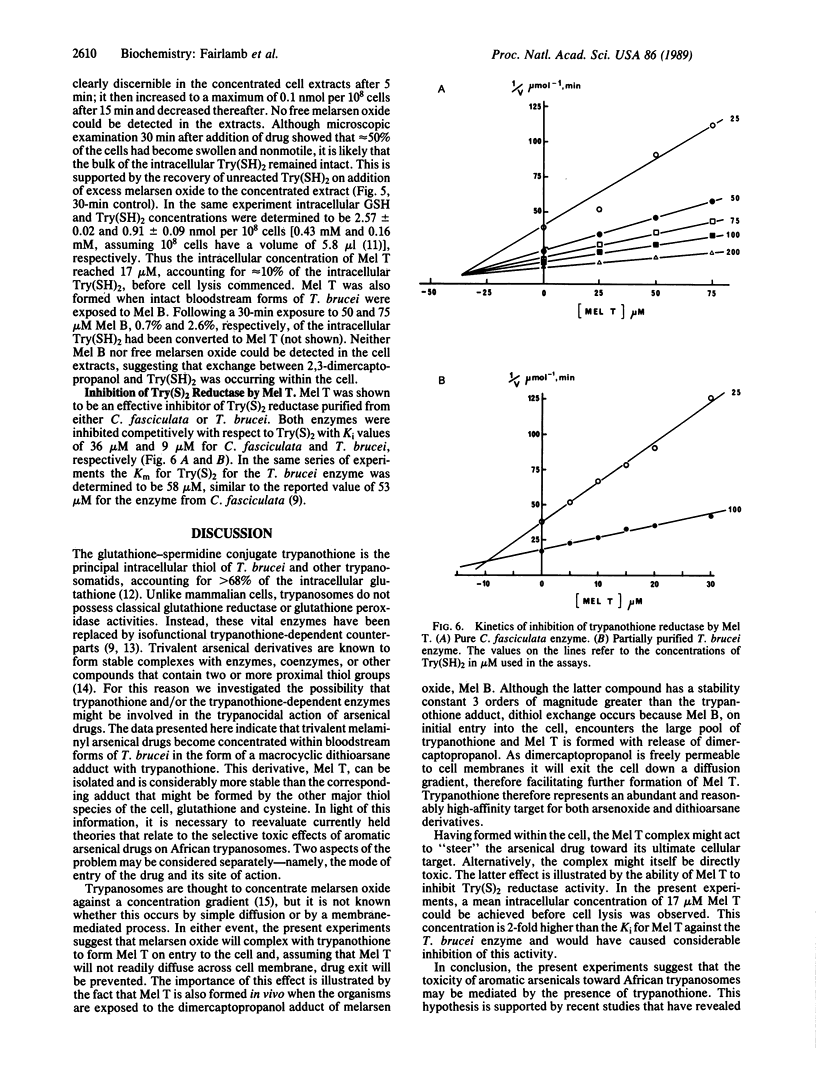
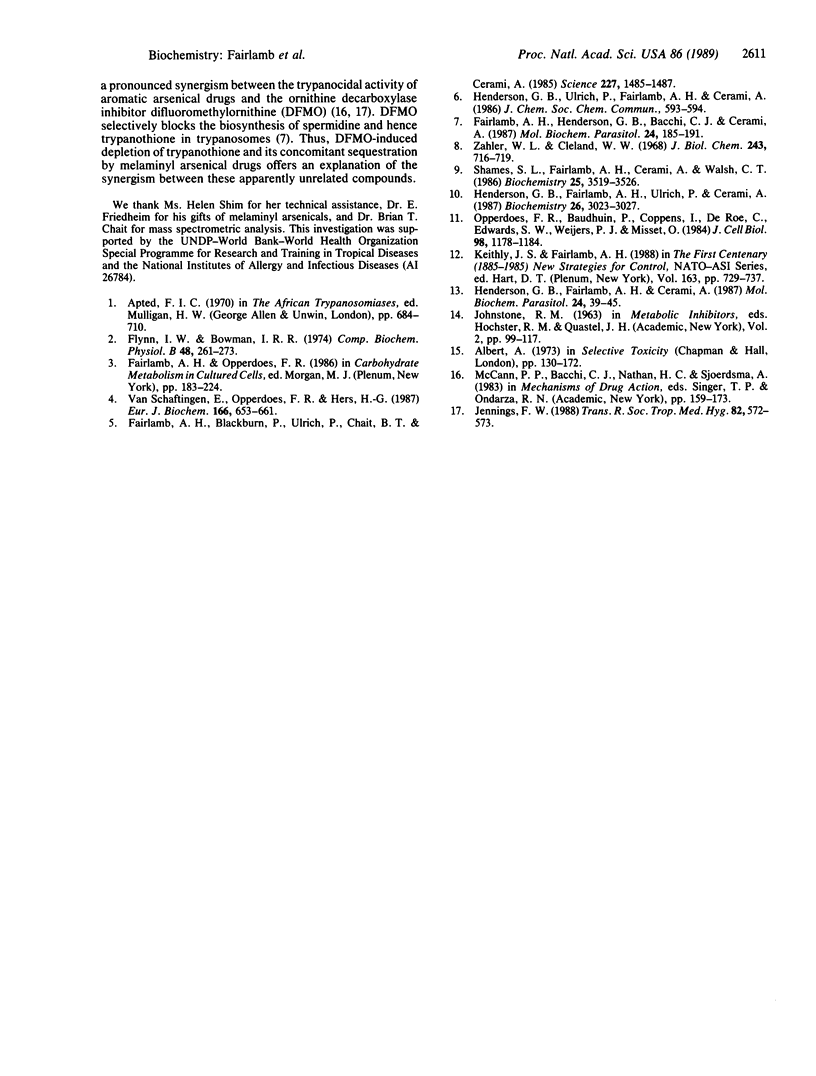
Selected References
These references are in PubMed. This may not be the complete list of references from this article.
- Fairlamb A. H., Blackburn P., Ulrich P., Chait B. T., Cerami A. Trypanothione: a novel bis(glutathionyl)spermidine cofactor for glutathione reductase in trypanosomatids. Science. 1985 Mar 22;227(4693):1485–1487. doi: 10.1126/science.3883489. [DOI] [PubMed] [Google Scholar]
- Fairlamb A. H., Henderson G. B., Bacchi C. J., Cerami A. In vivo effects of difluoromethylornithine on trypanothione and polyamine levels in bloodstream forms of Trypanosoma brucei. Mol Biochem Parasitol. 1987 Jun;24(2):185–191. doi: 10.1016/0166-6851(87)90105-8. [DOI] [PubMed] [Google Scholar]
- Flynn I. W., Bowman I. B. The action of trypanocidal arsenical drugs on Trypanosoma brucei and Trypanosoma rhodesiense. Comp Biochem Physiol B. 1974 Jun 15;48(2):261–273. doi: 10.1016/0305-0491(74)90203-x. [DOI] [PubMed] [Google Scholar]
- Henderson G. B., Fairlamb A. H., Cerami A. Trypanothione dependent peroxide metabolism in Crithidia fasciculata and Trypanosoma brucei. Mol Biochem Parasitol. 1987 May;24(1):39–45. doi: 10.1016/0166-6851(87)90113-7. [DOI] [PubMed] [Google Scholar]
- Henderson G. B., Fairlamb A. H., Ulrich P., Cerami A. Substrate specificity of the flavoprotein trypanothione disulfide reductase from Crithidia fasciculata. Biochemistry. 1987 Jun 2;26(11):3023–3027. doi: 10.1021/bi00385a011. [DOI] [PubMed] [Google Scholar]
- Jennings F. W. Chemotherapy of trypanosomiasis: the potentiation of melarsoprol by concurrent difluoromethylornithine (DFMO) treatment. Trans R Soc Trop Med Hyg. 1988;82(4):572–573. doi: 10.1016/0035-9203(88)90512-3. [DOI] [PubMed] [Google Scholar]
- Opperdoes F. R., Baudhuin P., Coppens I., De Roe C., Edwards S. W., Weijers P. J., Misset O. Purification, morphometric analysis, and characterization of the glycosomes (microbodies) of the protozoan hemoflagellate Trypanosoma brucei. J Cell Biol. 1984 Apr;98(4):1178–1184. doi: 10.1083/jcb.98.4.1178. [DOI] [PMC free article] [PubMed] [Google Scholar]
- Shames S. L., Fairlamb A. H., Cerami A., Walsh C. T. Purification and characterization of trypanothione reductase from Crithidia fasciculata, a newly discovered member of the family of disulfide-containing flavoprotein reductases. Biochemistry. 1986 Jun 17;25(12):3519–3526. doi: 10.1021/bi00360a007. [DOI] [PubMed] [Google Scholar]
- Van Schaftingen E., Opperdoes F. R., Hers H. G. Effects of various metabolic conditions and of the trivalent arsenical melarsen oxide on the intracellular levels of fructose 2,6-bisphosphate and of glycolytic intermediates in Trypanosoma brucei. Eur J Biochem. 1987 Aug 3;166(3):653–661. doi: 10.1111/j.1432-1033.1987.tb13563.x. [DOI] [PubMed] [Google Scholar]
- Zahler W. L., Cleland W. W. A specific and sensitive assay for disulfides. J Biol Chem. 1968 Feb 25;243(4):716–719. [PubMed] [Google Scholar]


